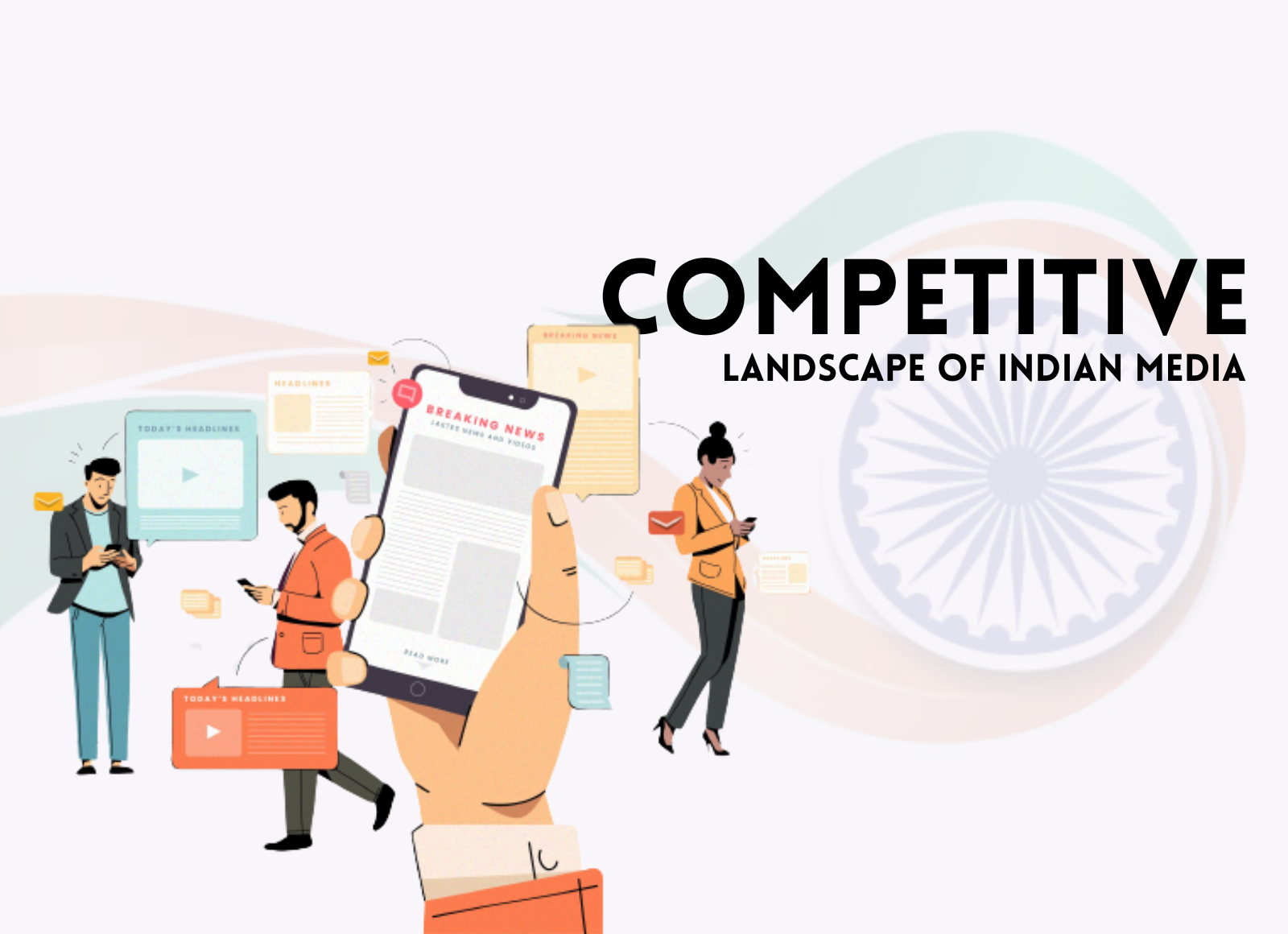India’s media landscape is a dynamic and diverse ecosystem that has witnessed significant transformations over the years. With a population of over 1.3 billion people and a burgeoning middle class, the Indian media sector has become one of the most competitive and influential in the world. In this article, we will delve into the competitive landscape of Indian media, exploring the key players, emerging trends, and the challenges they face in this ever-evolving industry.
1. Traditional Print Media:
- Newspapers like “The Times of India,” “Hindustan Times,” and “The Indian Express” have maintained their relevance despite the digital shift.
- Magazines such as “India Today,” “Outlook,” and “Femina” continue to cater to niche audiences.
2. Broadcast Media:
- Television channels, including “Star India,” “Zee Entertainment,” and “Sony Pictures Networks,” dominate the broadcast sector.
- Public service broadcaster “Doordarshan” remains a significant player, especially in rural areas.
3. Digital Media:
- The rise of digital media has brought forth giants like “NDTV,” “News18,” and “The Quint.”
- OTT platforms like “Netflix,” “Amazon Prime Video,” and “Disney+ Hotstar” have reshaped how Indians consume content.
4. Radio:
- FM radio channels like “Radio Mirchi,” “Red FM,” and “Big FM” maintain a loyal listener base.
5. Social Media:
- Platforms like “Facebook,” “Twitter,” “Instagram,” and “YouTube” play a pivotal role in disseminating news and information.
Emerging Trends
1. Digital Dominance: The proliferation of smartphones and affordable data plans has led to a surge in digital media consumption. News apps, podcasts, and online streaming platforms are changing the way Indians access information and entertainment.
2. Hyperlocal Content: Hyperlocal news portals and apps are gaining popularity as they cater to specific regions and communities, providing personalized content.
3. Fact-Checking and Accountability: The spread of fake news has prompted the growth of fact-checking websites and initiatives aimed at holding media accountable for accurate reporting.
4. Content Convergence: Many traditional media outlets are expanding into the digital space, creating a convergence of content across print, broadcast, and online platforms.
5. Language Diversity: India’s linguistic diversity is reflected in its media landscape. Regional language content is on the rise, with platforms like “Dailyhunt” and “Inshorts” targeting non-English-speaking audiences.
Challenges
1. Digital Disruption: Traditional media faces the challenge of adapting to the digital era. Falling advertising revenues for print media and the shift to streaming platforms for television are pressing concerns.
2. Content Regulation: The Indian government has increased scrutiny of digital content, leading to debates on censorship and freedom of expression.
3. Monetization: Monetizing digital media remains a challenge as many consumers are accustomed to free content, relying on advertising revenue.
4. Sustainability: Hypercompetitive pricing in the digital streaming sector has raised concerns about long-term sustainability and profitability.
5. Trust and Credibility: Maintaining trust and credibility in the era of fake news is an ongoing battle for media organizations.
The competitive landscape of Indian media is a reflection of the country’s diversity, with players ranging from traditional giants to nimble digital startups. While challenges persist, the industry’s ability to adapt and innovate ensures its continued relevance in the lives of millions of Indians. As technology continues to reshape how information is consumed, the Indian media sector will undoubtedly evolve further, offering new opportunities and challenges for both established players and newcomers.









0 Comments